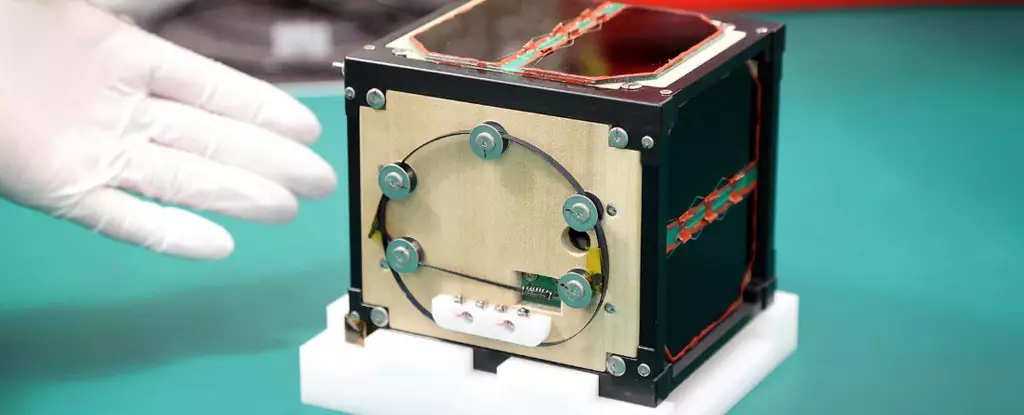The dawn of a new era in satellite technology has commenced with the launch of LignoSat, the world’s first wooden satellite. On a recent Tuesday, Japanese researchers from Kyoto University celebrated this landmark event as their innovative creation was propelled into orbit aboard a SpaceX rocket. This mission is part of a key resupply operation intended for the International Space Station (ISS), further enhancing the collaborative efforts within the international space community.
The design of LignoSat is not merely a step in satellite research but is also a strategic response to significant environmental concerns associated with space debris. When satellites reach the end of their operational lifespan, they often re-enter the Earth’s atmosphere, risking the generation of harmful metal particles. These remnants can adversely affect both the terrestrial environment and satellite communications. By employing wood as the primary material for LignoSat, scientists aim to observe how such a biodegradable structure performs during atmospheric re-entry. The anticipated outcome is a complete incineration of the satellite, thereby eliminating the risk of leftover metal debris that can jeopardize both ecological and telecommunications systems.
With dimensions measuring a compact 10 centimeters on each side, LignoSat is designed to be efficient and practical for space missions. Launched successfully from NASA’s Kennedy Space Center in Florida, the satellite was carefully secured within specialized containers prepared by the Japan Aerospace Exploration Agency. Following the launch, Kyoto University’s Human Spaceology Center confirmed that the satellite “flew into space safely,” marking a pivotal moment in materials science and aerospace engineering.
As LignoSat embarks on its trajectory toward the ISS, it will undergo a series of tests to evaluate its resilience against the harsh conditions of space. A representative from Sumitomo Forestry, one of the satellite’s co-developers, stated that the satellite is set to arrive at the ISS shortly, and will be released into the vastness of space approximately one month thereafter. This timeline allows researchers to rigorously monitor LignoSat’s performance, enabling them to gather valuable data on the effects of temperature fluctuations and other atmospheric challenges.
Prominent figures in the field, such as astronaut Takao Doi, have expressed optimism regarding the potential of non-metallic satellites. Doi predicts that as environmental considerations grow increasingly urgent, satellites composed of sustainable materials like wood could become the new standard in aerospace technology. This shift not only addresses ecological concerns but also paves the way for broader advancements in the design and functionality of future satellites.
LignoSat represents a significant breakthrough in satellite technology, bridging the gap between environmental sustainability and space exploration. Its successful launch marks not only a triumph for Kyoto University’s researchers but also sets the stage for innovative changes in how we perceive and utilize materials in outer space.


Leave a Reply